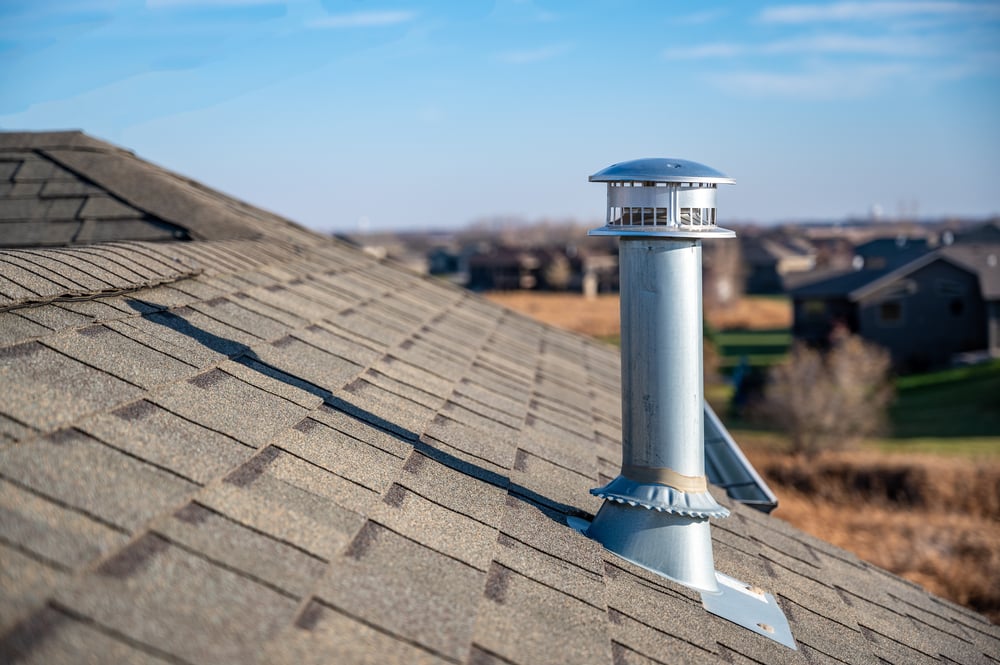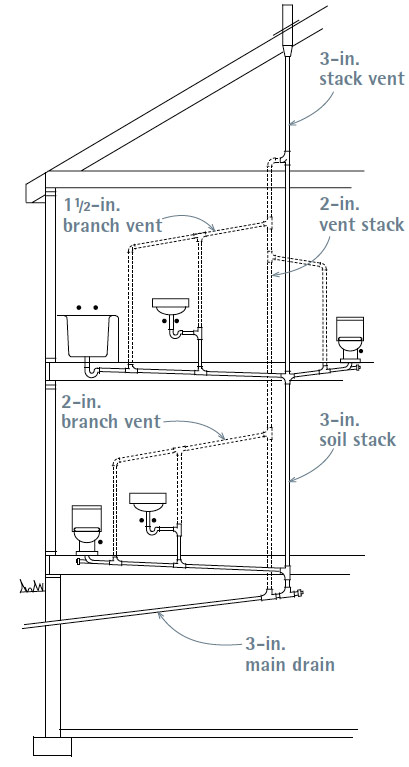How Adequate Ventilation Safeguards Your Plumbing System
How Adequate Ventilation Safeguards Your Plumbing System
Blog Article
Everybody has got their private rationale on the subject of What Is A Plumbing Vent & How Do They Work?.

Proper ventilation in plumbing systems is commonly ignored, yet it is vital for maintaining the functionality and safety of your home's plumbing. Air flow helps control atmospheric pressure, protect against the accumulation of dangerous gases, and ensure the efficient elimination of waste. In this overview, we will certainly discover the value of appropriate pipes ventilation, exactly how it works, and the advantages it gives your pipes system.
Just How Ventilation Functions in Pipes Equipments
Air Pressure Policy
Correct ventilation preserves well balanced air pressure within the plumbing system. When water streams with pipes, it displaces air. Without appropriate air flow, this variation can develop negative stress, leading to slow down drains or siphoning of water from traps, which can cause undesirable odors to seep right into the home.
Avoiding Sewer Gas Accumulation
Among one of the most critical features of pipes vents is to avoid sewer gases, such as methane and hydrogen sulfide, from building up within the home. These gases can pose major wellness threats and are extremely flammable. Vent pipelines permit these gases to run away securely outdoors.
Aiding in Waste Removal
Ventilation assists in the efficient removal of wastewater by stopping airlocks in the drain system. When air can move openly with the vents, it enables water and waste to flow efficiently through the pipelines, minimizing the risk of clogs and backups.
Advantages of Appropriate Air Flow
Improved System Efficiency
Correctly aerated plumbing systems run more effectively, with fewer obstructions, faster draining, and less stress on the pipelines. This performance extends the life expectancy of the pipes system.
Improved Air Top Quality
By protecting against drain gases from entering your home, proper air flow contributes to far better indoor air high quality, making your living setting healthier and a lot more comfortable.
Avoiding Water Damage
Appropriate ventilation helps stop water from being siphoned out of traps, which can bring about sewage system gases getting in the home and creating water damages gradually.
Actions to Make Sure Appropriate Ventilation
Consulting Pipes Codes
Constantly get in touch with regional plumbing codes when making or modifying your pipes system. These codes offer the necessary standards for correct airing vent and ensure your system meets safety standards.
Normal Inspection and Maintenance
Regular assessments can help identify prospective air flow problems before they come to be significant issues. Upkeep jobs, such as cleaning vent pipelines and looking for obstructions, are essential for maintaining the system in good working order.
Expert Installment
For brand-new installments or significant alterations, it's important to employ a specialist plumbing professional. They have the competence to guarantee the ventilation system is appropriately created and mounted according to code.
Recognizing Air Flow in Plumbing
Ventilation in pipes refers to the network of pipes that enable air to flow through the drainage system. These vents serve multiple functions, including controling air pressure within the pipelines, preventing sewer gases from going into the home, and assisting in the smooth circulation of wastewater.
Sorts Of Pipes Vents
Key Stack Vent
The major pile air vent, also called the air vent stack, is the main vent in a plumbing system. It extends from the main drainpipe align through the roof covering, enabling gases to escape and fresh air to go into the system.
Branch Vent
Branch vents connect to the major stack air vent and offer private components, such as sinks, commodes, and showers. These vents make certain that each component has adequate air flow to function properly.
Air Admission Valve (AAV).
An Air Admittance Shutoff (AAV) is a one-way shutoff that allows air to go into the pipes system without the requirement for a conventional vent pipeline extending via the roof covering. AAVs are commonly used in improvements or locations where mounting a typical air vent is unwise.
Indications of Poor Air Flow in Plumbing.
Slow Draining Fixtures.
If your sinks, bathtubs, or bathrooms are draining slowly, it could be an indicator of bad ventilation. Poor air flow can create a vacuum impact, making it hard for water to drain pipes correctly.
Gurgling Appears.
Gurgling noises originating from drains are frequently a result of air being sucked with water traps because of unfavorable pressure in the pipes. This is a clear sign of inadequate ventilation.
Undesirable Odors.
Drain odors inside your home are a warning that your plumbing system is not properly aerated. This might suggest that drain gases are not being sufficiently aired vent outside, causing potentially unsafe conditions.
Typical Ventilation Errors.
Insufficient Vent Sizing.
Utilizing small vent pipes can lead to inadequate air flow and pressure imbalances in the system. It's vital to utilize vents that satisfy the details demands of your plumbing system.
Improper Vent Positioning.
Putting vents also far from the components they offer can lower their efficiency. Appropriate placement makes sure that air can flow openly and efficiently with the system.
Ignoring Code Demands.
Building ordinance offer certain guidelines for pipes air flow. Disregarding these codes can cause a system that fails to operate appropriately and may bring about costly fixings or carcinogen.
Final thought.
Appropriate air flow is a vital part of any kind of plumbing system, making certain that it works effectively and safely. By comprehending the significance of ventilation, acknowledging the signs of poor ventilation, and taking steps to preserve your system, you can prevent costly concerns and secure your home's air high quality.
What is a Plumbing Vent and it's used for?All plumbing systems in residential and commercials construction have a plumbing vent. It doesn’t just vent unwanted odors from the drainage system to the outside; it actually serves an important purpose by supplying air to the system.
The plumbing drainage system is actually called a drainage, waste and vent (DWV) system. When water flows down the piping, an air supply (vent) is needed to allow the water to flow. Think of the vertical pipe as a drinking straw. If you plug the top end of a straw, liquid won’t drain from it.
The DWV system in your building consists of a series of pipes connected to each fixture; they extend above each fixture, and the system terminates at an open pipe that extends through the roof. This piping allows air into the system and prevents unbalanced pressures in the piping.
?The vent also prevents the system from drawing water out of a trap at the fixture with the characteristic “glug-glug-glug” as the drain gasps for air. Plumbing traps should drain smoothly and never “glug” or gasp for air.
If you have a drain that empties slowly or gurgles as it drains, this may indicate a venting problem. If you flush a toilet and the sink gurgles, there’s definitely a vent problem. It is good idea to have a Plumber check this.
https://www.ameliashomeinspection.com/blog/what-is-a-plumbing-vent-and-its-used-for

I'm certainly very focused on and I hope you appreciated our blog post. Enjoyed reading our piece of writing? Please share it. Let others locate it. Thanks so much for your time invested reading it.
Visit Page Report this page